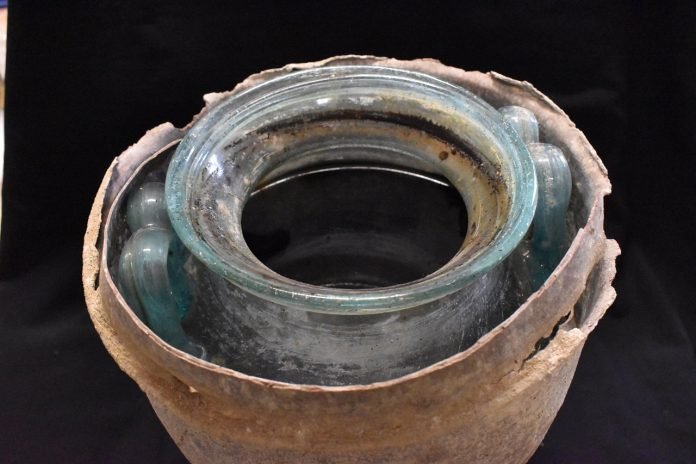
Researchers have discovered what is now considered the world’s oldest wine in a Roman tomb in Carmona, Spain.
This white wine, originating from Andalusia, is over 2,000 years old, making it the oldest ever found.
In 2019, archaeologists unearthed a Roman tomb containing six inhabitants—two men and four women.
The tomb belonged to a wealthy family, and one of the men’s skeletal remains was found immersed in a reddish liquid inside a glass funerary urn.
This liquid, preserved since the first century AD, was later identified as wine by a team from the University of Cordoba, led by Professor José Rafael Ruiz Arrebola, in collaboration with the City of Carmona.
The liquid’s preservation was remarkable given the tomb’s 2,000-year history. “At first, we were very surprised that liquid was preserved in one of the funerary urns,” said Juan Manuel Román, the municipal archaeologist for the City of Carmona.
The tomb’s excellent conservation conditions, being fully intact and well-sealed, allowed the wine to maintain its natural state, preventing contamination from floods, leaks, or condensation.
The research team had to confirm whether the reddish liquid was indeed wine and not something that had lost its essential characteristics over time.
They conducted chemical analyses at the UCO’s Central Research Support Service (SCAI) and published their findings in the Journal of Archaeological Science: Reports.
The scientists examined the liquid’s pH, organic matter, mineral salts, and the presence of specific chemical compounds.
They compared these properties to those of modern wines from Montilla-Moriles, Jerez, and Sanlúcar. Initial evidence suggested that the liquid was indeed wine.
A crucial part of the identification process involved detecting polyphenols, biomarkers present in all wines. Using advanced techniques to identify these compounds in very low quantities, the team found seven specific polyphenols also present in modern wines from the mentioned regions.
The absence of syringic acid, a polyphenol, helped identify the wine as white. However, the researchers caution that this acid might have degraded over time, so further confirmation was necessary.
Determining the wine’s exact origin was challenging due to the lack of samples from the same period for comparison. Nonetheless, the mineral salts in the tomb’s liquid matched those found in modern white wines from the former province of Betis, particularly Montilla-Moriles wines.
In ancient Rome, wine was a man’s drink, and the fact that the man’s remains were immersed in wine is significant. Women were prohibited from drinking wine, reflecting the gender divisions in Roman society.
The tomb contained two glass urns, with one holding the man’s bones, a gold ring, and other remains from his funeral bed, while the other contained the woman’s remains, three amber jewels, a bottle of perfume with a patchouli scent, and silk fabric remnants.
These items were part of a funerary trousseau meant to accompany the deceased into the afterlife. In ancient Rome, death had special significance, and people wanted to be remembered to remain alive in some way.
The tomb, a circular mausoleum likely for a wealthy family, was located near the important road connecting Carmo with Hispalis (Seville) and was marked by a tower that has since disappeared.
Two thousand years later, the discovery of Hispana, Senicio, and their companions has not only brought them back into memory but has also provided valuable insights into Roman funerary rituals. This discovery has allowed researchers to identify the liquid in the glass urn as the oldest wine in the world.



